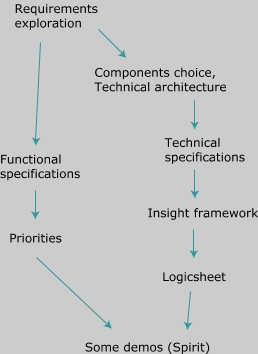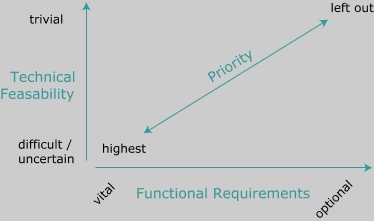 |  |



 |  |


 |  |




 |  |  |
 |  |  |
 |  |
|
 |  Main Main |  |
 |  License License |  |
 |  Introduction Introduction |  |
 |  People People |  |
 |  Embedded products Embedded products |  |
 |  Links Links |  |
 |  |  |
 |  |  |
 |  |
|
 |  Status Status |  |
 |  |  |
 |  Risk Risk |  |
 |  |  |
 |  |  |
 |  |
|
 |  Use Cases Use Cases |  |
 |  Architecture Architecture |  |
 |  Setup Setup |  |
 |  |  |
 |  |  |
 |  |
|
 |  Spirit Spirit |  |
 |  Insight Insight |  |
 |  Legend Legend |  |
 |  |  |
 |  |  |
 |  |
|
 |  Runtime Runtime |  |
 |  Dev (full) Dev (full) |  |
 |  |  |
 |  |  |


Shaman is the technical incarnation of URDNet, a Distant Learning
project, initiated at l'Université René Descartes, Paris 5.
It is an ambitious project, and, for this reason, a first
"round" should give Decision Makers
an overview of :
This first round deadline is set on
2002-08-24 (end of August 2002).
The intent is not to provide a production-ready
project at the end of the first round, but :
We must confess that the project was not really defined at startup.
Before asking what should be done, we were bound to ask
how could we know what should be done. The answer to
the last question defined the project approach, according that :
![]()
"Component" means here "some reusable software stuff".
In that perspective, a Web server is a component.
It was clear that our End-Users were not ready for a top-down approach. The problem is too open, they don't know what's feasible, they don't have a clear vision of the whole problem (especially when related to system, security or administrative aspects).
An Xtreme-Programming approach (pure incremental) was not the solution, neither. It would require constant user feedback. It would not solve the problem of getting a system overview at the early development stage. And the first deadline was too close for delivering even a near-operational system.
Risk againThe solution came for studying risk.
Since integrating components is, at the same time, a Good Thing (for the benefits of software reuse) and a dangerous thing (sometimes, it's hard to make them cooperate), there was an inherent risk on this side.
The system was planned to be evolvable (with new standards support,
new features, etc)."Evolvable" means nothing by itself, if it is
not backed by a careful design. Adding flexibility to a
system has a cost, and there is always the risk of not
adding flexibility where it should.
![]()
Don't expect a User to tell you what should (really) be flexible.
For the reasons explained above, we decided to base our project's
approach on technical architecture. "Approach" is the idea behind
questions like :
This approach combines the major advantages of offering the Best of breed of software components we know, and adressing the major problem of requirement evolvings at early stage.
Project phasingDetermination of project phases has been an incremental process for about one month, ran in parallel of architectural decisions.

Insight is the subproject which is the "hard part" of Shaman. The Logicsheet is its API, used by Legend (the part designed to embrace feature changes). More details on those subsystems collaboration can be found in architecture document.
Assigning prioritiesHere is the template of our priority matrix :

It takes care of two aspects, which are
reflected by two dimensions :
Integrating functional needs in that early stage should lower the
risk of creating an unusable / inadapted framework.
|
Time is not the critical resource. The critical resource
is time at the start of the project.
The sooner a feature is implemented, the sooner design can be corrected. The problem is that, we cannot implement everything at the start of the project. |
We do not plan to set a schedule for tasks during the first round, because of our lack of experience on the software platform(s). Moreover, we do not have the time to keep a schedule up to date. We deliver what we can, in respect of established priorities.
